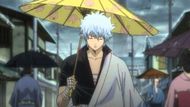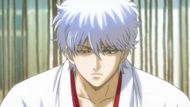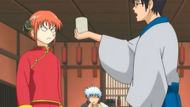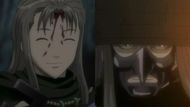To most people, Gintama is a chaotic, comedic anime filled with toilet jokes, fourth-wall breaks, and absurd parodies of every anime under the sun. But to those who’ve stayed with it long enough, one truth becomes blindingly clear: Gintama is not just about jokes. It’s about pain, connection, growth, and healing. And no character embodies that more than Sakata Gintoki.
At first glance, Gintoki seems like a complete subversion of your typical Weekly Shonen Jump protagonist. He’s an adult, lazy, addicted to sweets, broke, and lacks any clear ambition. He’s not out to be the Pirate King or Hokage. There’s no grand goal.
But scratch beneath the surface, and you’ll realize something important: Gintoki is still every bit a shonen protagonist, just one who had already completed his "typical" arc before the series even started.

By the time we meet him at the start of the story, Gintoki has already been through the kind of story most shonen protagonists end with: a poor, lonely orphan with nothing becomes a feared warrior in a war to protect what he holds dear, only to be forced to kill the very person who gave his life meaning.
He loses everything and everyone, including his mentor, his purpose, and his friends. And when we meet him, his character is just wandering, soul broken, masking his pain behind sarcasm and sugar. But the story isn’t done. His real story, the Gintama story, is one of redemption, healing, and rebuilding.
Gintoki was once a monster in Gintama

Before Shoyo, Gintoki was a literal demon. He was a corpse-eating child scavenging battlefields to survive. Alone. Dehumanized. The “White Yaksha” we later hear legends of wasn’t a hero; it was a warning. And then Shoyo came.
Yoshida Shoyo gave Gintoki his humanity. In Gintama, he didn’t just teach him how to wield a sword, but rather, he taught him how to live. Shoyo gave him purpose, love, friendship, and values. In Gintama, he was Gintoki’s light, and when he was taken away, it wasn’t just a loss. It was shattering.
Because Gintoki’s biggest failure is that he was forced to kill the person he loved most in the world, all to protect the others he held dear. It was a sacrifice that should have honored Shoyo’s teachings. But instead, it broke everything.
Takasugi couldn’t forgive him. Katsura drifted away. The students scattered. And Gintoki, despite doing the “right” thing, was left alone again. The White Yaksha returned, but this time not as a warrior, but as a wandering corpse.
Internalizing grief, quietly saving others

Unlike Takasugi, who externalized his pain into destruction, Gintoki turned it inward. He never sought revenge. He never blamed the world. But he also never forgave himself. Yet when given a chance to die to save someone else, he offered his life willingly. And when he wasn’t executed, he wandered aimlessly into a graveyard, back to where he started: alone among the dead.
It’s here he meets Otose. A woman who also knew loss, as she was a widow. And when she shares her food offering with him, she unknowingly throws him a lifeline, not just from starvation, but from despair.
That small act of kindness saves his soul. It’s why he can never pay his rent. Not because he’s broke (well, he is), but because he owes her everything. She gave him something priceless: a second chance at life. And from that point on, Gintoki begins to live again, not for himself, but for others.
Shinpachi and Kagura: The kids he chose

Perhaps nothing highlights Gintoki’s humanity in Gintama more than his bond with Shinpachi and Kagura. They’re not just his co-workers or friends. They’re his family.
He mentors Shinpachi with snark and sarcasm, but the wisdom behind his words is undeniable. He gives Kagura a home, a routine, and a parent figure when she had none. He may act like an irresponsible guardian, but he never fails to protect them. Moreover, he becomes Shoyo to them, the very mentor he lost.
Utsuro: The final mirror of despair

In Gintama, Utsuro was the ultimate antagonist and the perfect mirror to Gintoki. He is what Gintoki could have become. A man cursed with immortality, who lost everyone he ever loved.
Utsuro wants to destroy the world because he no longer believes joy exists. He envies Shoyo because Shoyo, despite everything, found happiness in others. And so Utsuro targets Gintoki.
Because if Gintoki, who lost so much and suffered so deeply, still believes in connection, then Utsuro’s entire philosophy falls apart. But Gintoki doesn’t fight alone. And that’s the difference. Utsuro may have split his soul a hundred times, but he was still alone. Gintoki never split his soul. He shared it with everyone he loved.
